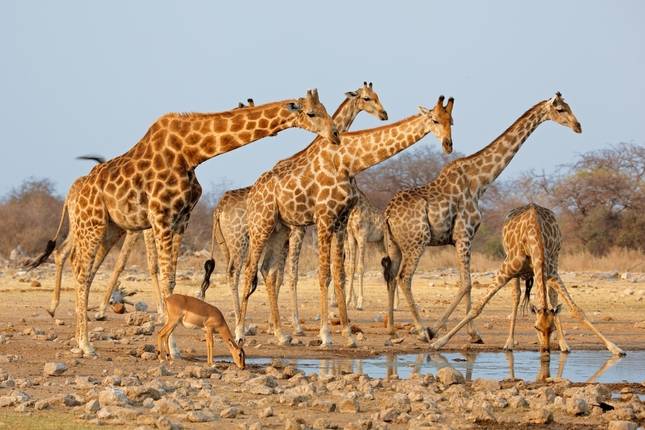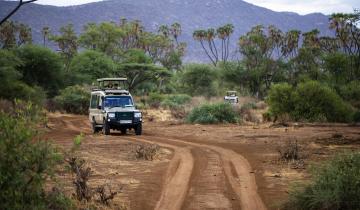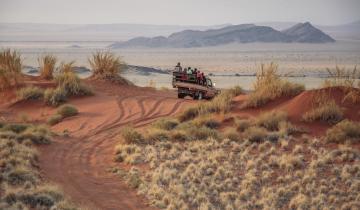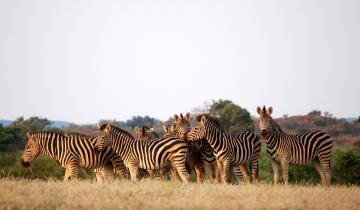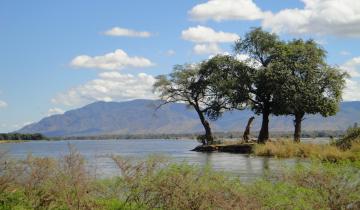
Best Time to Visit Etosha National Park
Ready to explore the wilderness of Etosha National Park in Namibia? Before you set off for Windhoek, the country’s exciting capital, from where you can easily access Etosha, find out the best time to visit this part of Africa. Learn everything about the park’s changing seasons to the prime time for game viewing in this guide.

Temperatures
The table below shows the average temperatures in Celsius and Fahrenheit for Etosha National Park, during the day and at night from month to month.
| Jan | Feb | Mar | Apr | May | Jun | Jul | Aug | Sep | Oct | Nov | Dec | |
|---|---|---|---|---|---|---|---|---|---|---|---|---|
| Max ° C (day) | 31 ° C | 30 ° C | 29 ° C | 28 ° C | 26 ° C | 24 ° C | 24 ° C | 27 ° C | 31 ° C | 33 ° C | 32 ° C | 31 ° C |
| Min ° C (night) | 18 ° C | 18 ° C | 17 ° C | 15 ° C | 11 ° C | 8 ° C | 8 ° C | 10 ° C | 15 ° C | 18 ° C | 18 ° C | 18 ° C |
| Max ° F (day) | 88 ° F | 86 ° F | 84 ° F | 82 ° F | 79 ° F | 75 ° F | 75 ° F | 81 ° F | 88 ° F | 91 ° F | 91 ° F | 88 ° F |
| Min ° F (night) | 64 ° F | 64 ° F | 63 ° F | 59 ° F | 52 ° F | 46 ° F | 46 ° F | 50 ° F | 59 ° F | 64 ° F | 64 ° F | 64 ° F |
Rainfall
Below you'll find information about the rain patterns in Etosha National Park. During the dry months, animals are easier to spot as they stay by the limited waterbodies. During the wet months, they are scattered all over the park - making it much harder to locate them.
| Jan | Feb | Mar | Apr | May | Jun | Jul | Aug | Sep | Oct | Nov | Dec | |
|---|---|---|---|---|---|---|---|---|---|---|---|---|
| Rain in mm | 120 mm | 140 mm | 80 mm | 40 mm | 6 mm | 0 mm | 0 mm | 0 mm | 1 mm | 20 mm | 55 mm | 95 mm |
| Chances of rain |
High
|
High
| Medium | Medium |
Low
| - | - | - | - |
Low
| medium | medium |
| Rain in inches | 4.7 in | 5.5 in | 3.1 in | 1.6 in | 0.2 in | 0 in | 0 in | 0 in | 0 in | 3 in | 6 in | 11 in |




